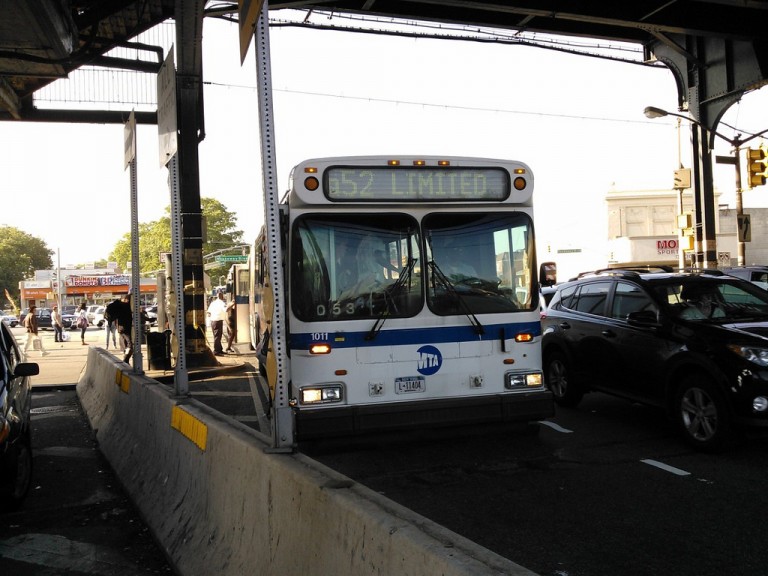PHOTO: The goal of the symposium, according to a federal transportation official, was to make collective recommendations for advancements to improve bus/pedestrian safety around North America. Courtesy of MTA
By Forum Staff
The Metropolitan Transportation Authority last week hosted a safety symposium featuring more than 75 researchers, representatives from major bus manufacturers, and safety experts from federal transportation and transit agencies around North America discussing issues regarding the daily protection of pedestrians and buses.
Officials from MTA New York City Transit, State and City Departments of Transportation, transit unions, and bus agencies for metro areas including Philadelphia, Chicago, Toronto, Miami, Washington, D.C., Montreal and Los Angeles attended and contributed to the conference.
The ultimate goal of the safety summit, according to keynote speaker Mark Rosekind, administrator of the National Highway Traffic Safety Administration, was to make collective recommendations for necessary regulatory, operational, and technological advancements to improve bus/pedestrian safety around North America.
NYC Transit officials acknowledged that the agency faces unique challenges in that it operates the largest bus fleet in North America to accommodate the largest bus ridership in North America. Round-the-clock service is provided through some of the country’s most densely populated urban areas.
“Like most transit and transportation agencies across the country, we are tasked with expanding and enhancing our bus service as well as implementing new technologies and safety systems,” MTA Chairman and CEO Thomas Prendergast said. “By inviting the brightest minds in the country to weigh in on best practices and recommendations for next step advancements, we are essentially pooling our limited resources to arrive at consensus about what additional research, technological advancements or regulatory reform is needed to achieve the best possible bus/pedestrian safety outcomes.”
NYC Transit representatives said that this year the agency is testing new safety technology on a small group of buses, with the goal of gathering operations and efficiency data for larger pilot programs next year. The first is a collision avoidance system, which uses smart cameras to proactively warn bus operators audibly and visually in the event of a potential collision happening in the front or the sides of the bus. The second technology, a pedestrian turn warning system, automatically alerts pedestrians audibly at a crosswalk when buses nearby are making right or left hand turns.
NYC Transit’s safety goals are reliant on data, such as critical data on vehicular and pedestrian usage, flow and traffic, officials said, as well as other research provided by the City DOT. Safety initiatives and changes that have been implemented following data shared between the two agencies include the introduction of bus-only lanes, relocations of bus stops, bulbs and traffic islands, directional changes on major streets and installations of pedestrian plazas.
“Over the past two years, we have been able to decrease pedestrian and bicycle incidents involving buses by 16.4 percent,” Prendergast added. “We need to do everything in our power to make sure that we not only hold on to the gains we’ve achieved, but that we continue to push to eliminate bus accidents altogether.”

